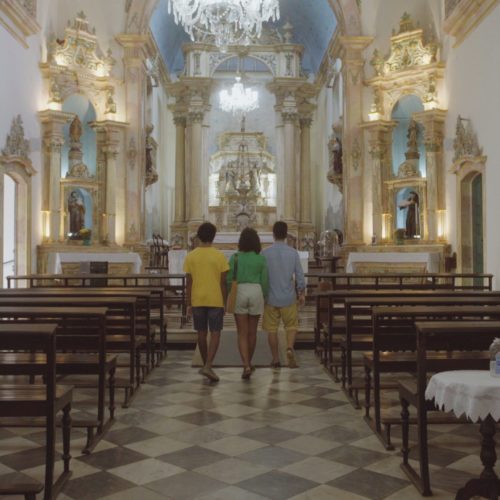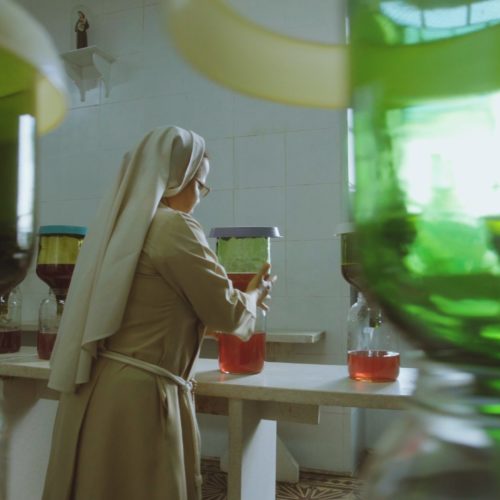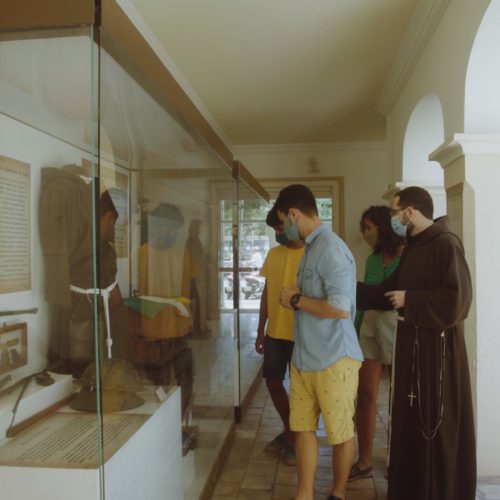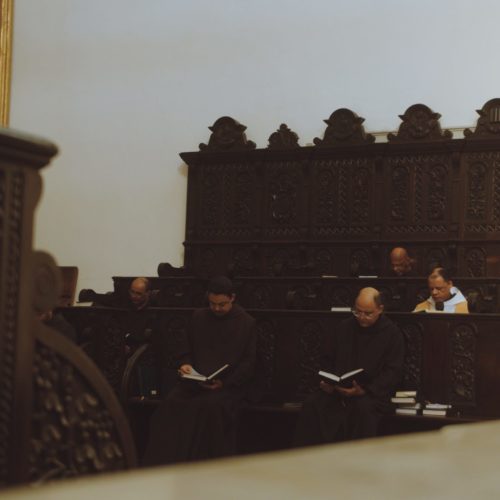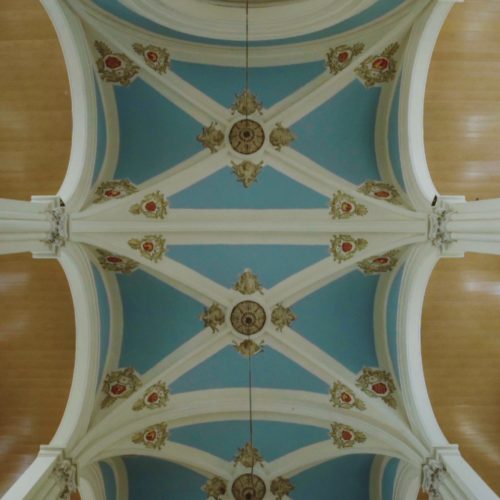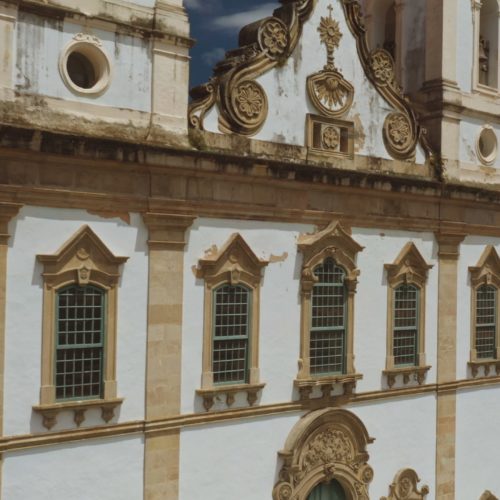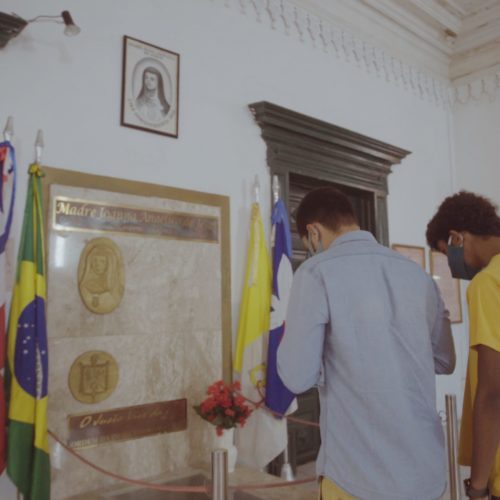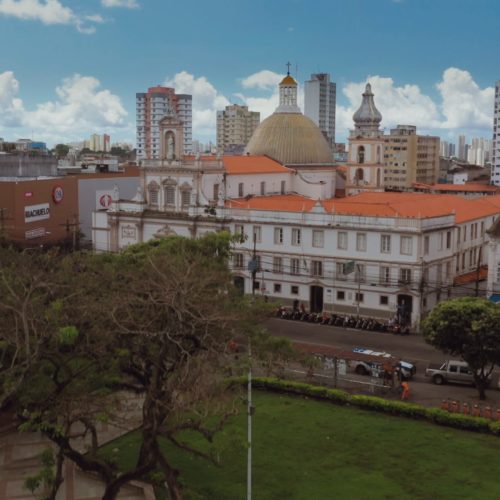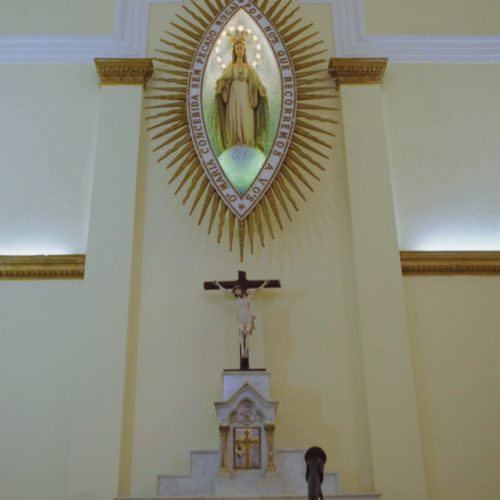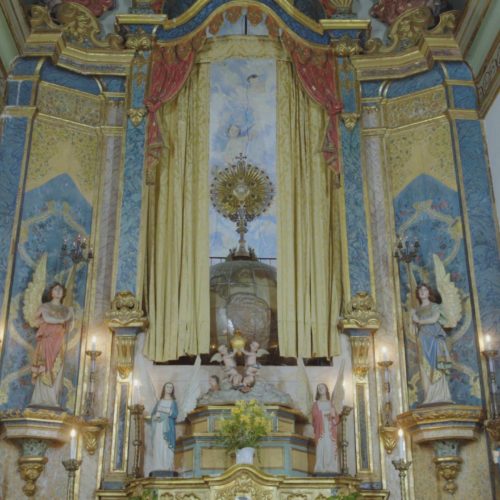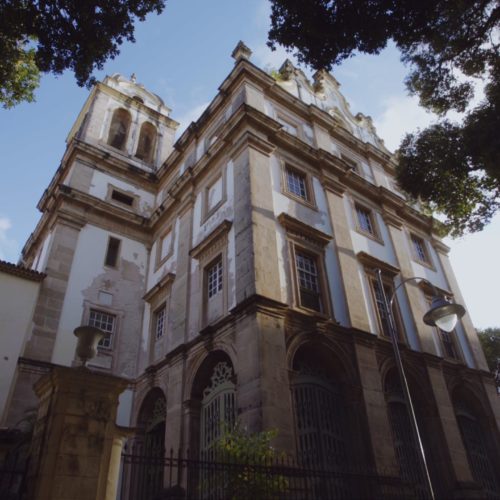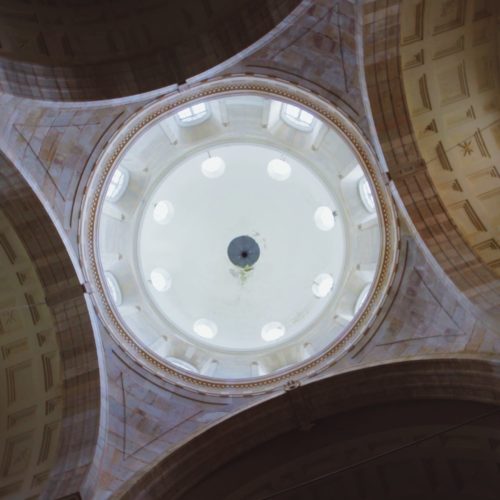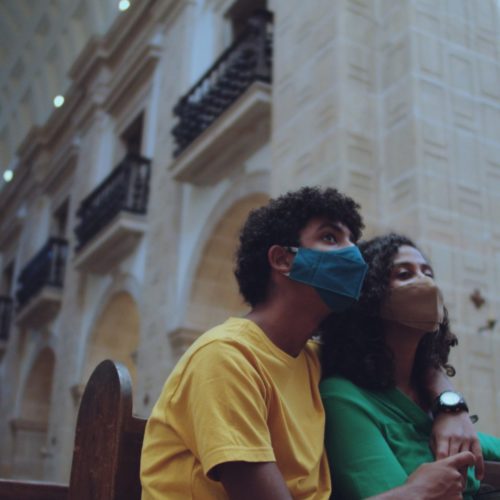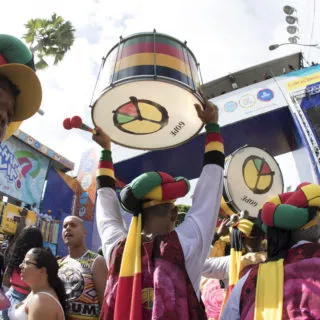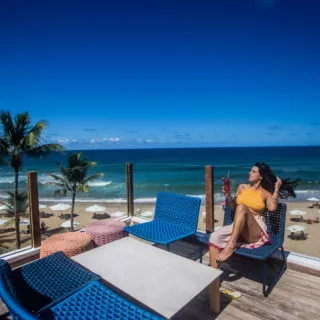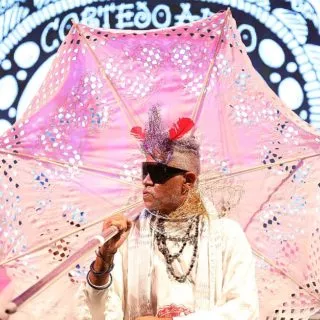
Salvador’s architectural, religious and cultural heritage
There is an itinerary of the Catholic faith in Salvador that takes us along paths that used to be outside the walls of old Salvador, when the city was still in its origins. Father Manoel de Oliveira Filho, Archdiocesan Coordinator of the Pastoral do Turismo, explains that this itinerary is exactly that of the monasteries and convents, which were built outside the city limits, to privilege aid, care and charity to poorer people, who lived in this peripheral region, as well as those who lived inside the city, but who did not feel contemplated by the existing churches. Over the years and the expansion of Salvador around the convents and monasteries, these were integrated into the city and are now part of the Catholic tourist route.
To tell these and other stories, the City of Salvador, through the Department of Culture and Tourism (SECULT), in partnership with Pastoral do Turismo, is launching the Caminhos de Fé (Walks of Faith) webseries. The project consists of a series of three episodes, featuring immersive tours that experience churches, shrines, museums and Catholic temples in Salvador. Learn more at this link.
For the second episode, Convents and Monasteries Itinerary, we go to the Old Center, also called Extended Historic Center. Here, a new path emerges, organized around history, religiosity and even gastronomy, in an approach that values the architectural, religious and cultural heritage of the eight visitation points that keep spiritual memories and experiences of more than four centuries. Also watch the first itinerary, Art and Catholic Faith, on this link.
The first characteristic of the Convents and Monasteries Itinerary is the meaning of community life. In addition to the beauty of the spaces, visitors will find “living churches”, with constant religious activities by the people who live there. A parish community of lay people and people who live in convents and monasteries, such as sisters, nuns, friars and monks who take care of the place in a very meticulous and loving way, as in a family home.
This feeling of community is a very striking feature of this journey. The Church of Santana, for example, was attended by Saint Dulce’s family who, when still a girl, participated in the masses held there, as well as the family of singer Dorival Caymmi. These are churches in which people have built and are still building family bonds, which makes this tour even more enchanting.
Come with Visit Salvador da Bahia and learn more about each church.
Convent of Santa Clara do Desterro
A temple of devotion to the Servant of God Vitória da Encarnação

The Convent of Santa Clara do Desterro was the first female convent in Brazil, founded in 1677, by a group of Poor Clare nuns, coming from the Convent of Santa Clara, in Évora, Portugal. The founders of Desterro are Mothers Margarida da Coluna, Jerônima do Presepe, Luiza de S. José and Maria de S. Raimundo.
Today, the space is managed by the Congregation of the Franciscan Sisters of the Sacred Heart of Jesus. The complex houses the church, an elementary school – Colégio Franciscano Santa Clara – and a social project. It is also very popular for wedding celebrations. Its capacity is about 200 people.
The Servant of God Mother Vitória da Encarnação lived in this convent, and today the place is a space for the cultivation of devotion to the candidate for the altars. There is a project by some devotees, the archdiocese and Dom Murilo, then Archbishop of Salvador, to take her name to canonization. In 2016, Mother Vitória won the title of Servant of God, a name given by the Holy See.
Curious fact
As if the historical importance were not enough, the nuns made the place something very typical to visit during the festivities of June, as it became one of the main points of production of liquor in the city, a very traditional drink of the São João Festivities. About 800 to 1000 liters of liquor are produced per year, of which 500 to 600 liters in the period prior to São João. Learn more at this link
Service
Convent of Santa Clara do Desterro
Address: Rua Santa Clara, no number – Nazaré
Phone #: 2203-4015 / 71 99681-1711
Church of the Blessed Sacrament and Santana (Igreja do Santíssimo Sacramento e Santana)

This Church was the first Brazilian work of its kind here – it was designed by a Brazilian master, the Bahian painter Franco Velasco and built in the second half of the 18th century. It was there that Sister Dulce received the call to her vocation.
Address: Rua do Carro, no number – Nazaré
Phone #: (71) 3241-1165 or (71) 3243-1935
Visitation: Monday to Friday, 8 am to 5 pm / Free entry
Church and Convent of Our Lady of Conceição da Lapa (Igreja e Convento de N. Sra. da Conceição da Lapa)

The Convent was inaugurated in 1744 and destined for the Franciscan Conceptionists. It was the scene of a tragic military action during the struggles for independence. Soldiers tried to invade the cloister and the Abbess Joana Angelica tried to stop them. The nun was killed by bayonet blows.
Address: Rua Joana Angélica, 41 – Nazaré
Phone #: 71 3326-4676 or (71) 98874-4587 / 99139-7757.
Visitation: Monday to Friday, 8 am to 5 pm / Free entry
Sanctuary of Our Lady of Sorrows and Capuchin Memorial (Santuário de N. Sra da Piedade e Memorial dos Capuchinhos)

Built in 1712, demolished in 1800, rebuilt in 1809. The Sanctuary of Our Lady of Sorrows is one of the first churches with a neoclassical facade and interior in Brazil. The Capuchin Cultural Center is an important cultural legacy with a library, historical archive and museum. They are located in Praça da Piedade, which was named after the Sanctuary. The nave of the church is divided into three parts, inspired by the Church of Saint Peter in Rome. In the pleasant and well-kept courtyard, there is a small exhibition of artifacts dating back to Capuchin history. Learn more at this link.
Santuário de Nossa Senhora da Piedade e Memorial dos Capuchinhos
Address: Praça da Piedade, no number – Centro
Phone #: 71 3329-2388
Visitation: Monday to Friday, 8 am to 5 pm / Free entry
Chapel of the Blessed Lindalva Justo (Capela da Bem-Aventurada Lindalva Justo)

The Nossa Senhora do Salette School, now an institute, was one of the first buildings in the Barris district, in 1858. There, in a chapel, are deposited the relics of Blessed Lindalva Justo, a nun who suffered martyrdom in 1993. Sister Lindalva was the first woman to be beatified in Brazil. It took place on December 2, 2007 – even before Sister Dulce, which happened in 2010.
Born in Açu (RN), Sister Lindalva came to Salvador to work at the home for elderly, Asilo Dom Pedro II. She was still a young Daughter of Charity, with 4 years of vocation, when she suffered martyrdom. She died in 1993, victim of femicide*, while distributing breakfast to the seniors of Asilo Dom Pedro II, which still operated in Boa Viagem. She was killed by a resident who, in love with her, began to harass her and did not accept the fact of living an unrequited love. Her fidelity to her vocation and her love for all people, without preferences, were so intense that she did not hesitate to give her life for them.
“I’d rather have my blood spill than leave,” Sister Lindalva replied, when asked why she didn’t leave the shelter, even after her attacker’s harassment.
Learn about this story on this link
Address: Rua do Salette, 47 – Barris
Phone #: (71) 3038-3900
Opening hours: from 2 pm to 5 pm.
Masses: Fridays and Saturdays at 5 pm.
Visitation: Capela do Martírio, where the murder of Beata Lindalva Justo de Oliveira took place, can also be visited from Monday to Friday from 8 am to 4 pm. The temple is located in the former Dom Pedro II shelter (Avenida Luiz Tarquínio, close to the Sister Dulce Social Works (OSID), in the Lower City).
Femicide: the qualification of the crime of murder of this type did not yet exist at the time of her death.
Old St. Peter Church (Igreja de São Pedro Velho)

The current Parish Church of Old St. Peter is the third temple of this historic Church and construction began in June 1916. It was inaugurated on December 2, 1917, three years after the demolition of the old
Church of St. Peter. The current image of Saint Peter, from the main altar, is probably from the 18th century.
The Parish Church of Old St. Peter is one of the most active in Salvador, having its masses and celebrations always full. It is a temple that accompanied the structural and cultural changes in the Historic Center of Salvador. Learn more at this link
Address: Praça da Piedade – Centro
Phone #: (71) 3329-3280
Visitation: Sunday from 7 am to noon; Monday to Saturday from 7am to 6pm.
Masses: Monday to Saturday, 8 am, 10 am, 3 pm and 5 pm. Sunday, 7:30 am, 9:30 am and 11:30 am.
St. Raymond Church (Igreja de São Raimundo)

The Church of St. Raymond Nonnatus was founded in 1753. On September 10, 1933, to mark the first National Eucharistic Congress, in Salvador, Dom Augusto Álvaro da Silva elevated the Church to the status of Sanctuary of Exhibition and Perpetual Adoration of the Blessed Sacrament.
Address: Rua Sodré, 276 – Politeama
Phone #: (71) 3283-5591 or (71) 3329-3643
Visitation: Monday to Friday, from 7 am to 7 pm (scheduled service) and from 10 am to 6 pm (general visit) / R$ 10.00 (normal) R$ 5.00 (half)
Monastery of St. Benedict (Mosteiro de São Bento)

It is the first Benedictine monastery in America, founded in 1582. Its library houses thousands of rare works and its beautiful choir looks truly divine. Its sacred collection is immense and magnificent.
Address: Largo de São Bento – Largo de São Bento. Avenida Sete de Setembro.
Phone #: (71) 2106-5200
For a safer tour
Many places still have opening hours and masses undergoing adaptation due to the pandemic. The best option is to call the Pastoral Office of Salvador (71) 4009-6605 and confirm the possibilities, or access the Archdiocese portal at this link.

